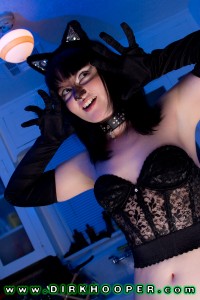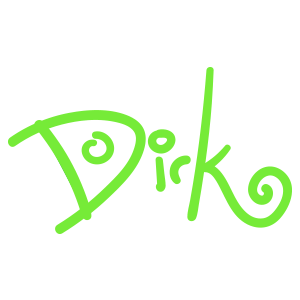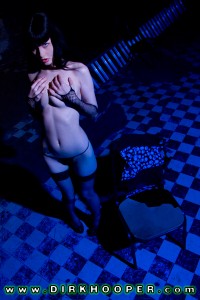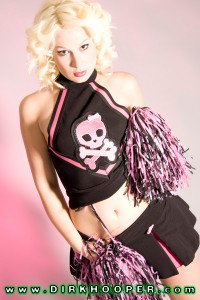
 Are you an alternative model who makes contact with photographers through the internet? I’ve been a photographer of alternative models (fetish, goth, punk, tattooed, bondage and steampunk models) for nearly fifteen years and I’m the model recruiter for Toxic Goddess. I get several online model applications a week, literally from all over the world. That means I get about two hundred applications a year. There’s no way I could photograph all of those models, so I have to be selective about whom I meet for a test shoot.
Are you an alternative model who makes contact with photographers through the internet? I’ve been a photographer of alternative models (fetish, goth, punk, tattooed, bondage and steampunk models) for nearly fifteen years and I’m the model recruiter for Toxic Goddess. I get several online model applications a week, literally from all over the world. That means I get about two hundred applications a year. There’s no way I could photograph all of those models, so I have to be selective about whom I meet for a test shoot.
I certainly can’t speak for all the alternative photographers out there, but I can tell you that there are a number of things that a model can do that gets my attention. If you want to rise above the other models that initial contact may be the only chance you get to make a good impression. You may be a spectacular model, but a photographer or client will only be able to make a judgment based on the photos and information you provide. It’s important that you make the best possible impression. The following tips will help you stand out of the crowd.
1. Discover You and Your Goals
Before you ever start contacting photographers, agencies or anyone else, you should make an honest assessment of what your look is, what your goals are and what your strengths and weaknesses are. Anyone you contact should be an extension of your initial assessment and your goals. In the world of conventional modeling, no matter how wonderful you are, if you’re 5’2” then you are too short to be a runway model. You have to be honest with yourself and to emphasize your strengths and do your best to minimize or fix your weaknesses. Then you’ll be ready to make first contact. Everything you do should move you toward your goals.
2. Do Some Research
Know who you’re getting in contact with and what they are looking for. Every photographer has a certain style and a body of work they are known for. Make sure their style works with your own portfolio. Some photographers will only work with models from an agency. Some photographers may only work with a model with a certain look. If a photographer only does nude photography, is that something that meshes with your own goals and beliefs? A little research will help you to figure out whom you are dealing with and if you and a certain photographer are a good fit.
3. Be Selective
You may be tempted to make a blanket push to model for everyone within driving distance. This can be especially tempting if you are a member of a social networking site for models. If you contact everyone who owns a camera you’re hurting yourself in two ways.
First off, you may end up working with photographers who will actually make you look bad. It doesn’t take much more than an investment in a camera to claim you’re a “photographer” and some people do not have their own reputation or yours in mind when they shoot with you. Bad photos or a bad experience is much worse than no photos or no experience. Your reputation (and bad photos) will follow you everywhere you go.
Secondly, if you’re sending short messages to everyone, then you’re not doing your research and you’re not spending the extra time necessary to get the attention of the best photographers out there. Be selective in who you contact and put some extra effort into your correspondence, you’ll get better results.
I’ve had models send me all kinds of photos over the years. Some potential models send photos that are the size of a postage stamp, or heavily pixilated cell phone shots, or pictures of their eyes! While you may have very pretty eyes, unless you want to be an eye model, a photographer needs to see more. In some cases, the photo selection is based on what the model thinks is a “cool” shot, but in other cases it may be a sign that the model is trying to hide something about their look. If you’re hiding something with your photo selection, then you should either re-assess where you’re at or do the work to be a better model.
As a photographer who recruits models, I really only need to see two things. I need a good clear photo of your face and hair, and I need a solid photo of your figure. If you don’t have professional photos, then make sure what you send are well lit and current. If you do send professional photos, they should be an honest representation of how you look. If your photos are more PhotoShop than you, then they are useless as a tool in evaluating what kind of model you are. Please don’t send me or any other photographer a photo that has been run through radical filters; it’s the quickest way to make you look like an amateur.
It’s always better to present a few great photos rather than a ton of weak photos. Include a face shot and a figure shot, then if you have more creative photos then include those as well. Alternative models tend to change hair styles and get body modifications frequently, so be sure to include a couple of current photos and make sure the photographer knows those photos are the most recent. Alternative photographers look for models with tattoos, wild hair or piercings, but your new change may or may not work with a specific project.
5. Be Professional
Adopt a tone that is friendly, but not overly familiar. A photographer will make a judgment about you based on your correspondence. If you come across as professional and responsible then you’ll be treated that way and a photographer will be more inclined to work with you.
Make sure that you write complete sentences and don’t use texting language in your contact emails or letters. Use spell check on your words. I encounter this problem with a lot of the people I deal with, so this is not just directed at models. A photographer is looking for someone who will show up on time, work hard and be reliable. Your words reflect directly on how people perceive you. You will rise above others if your correspondence is well composed.
6. Be Brief
Most of the photographers I know are very busy. Your correspondence has a greater chance of being read and answered if you keep it brief and stay on your message. Some photographers will welcome your ideas (I sure do), but don’t assume that from the beginning. The point of an initial contact is to open up the lines of communication and hopefully move toward working together. Let the photographer ask for more information. Your initial contact goal is to create interest in you and your work, nothing else.
7. Answer the Questions
I provide a model application on my site. The questions I ask were designed to give me the answers I need to quickly discern who is a good fit for my projects and who is not. If a photographer has a section of their website that has instructions for contact with new models, take the time to fully answer the questions they propose. If it was important enough to the photographer to ask the question, then your answers could make a difference.
Whatever your current personal situation is, you should always be positive when making that initial contact. No one wants to work with someone who is in a bad mood. Beside the fact that it’s unpleasant to work with someone who is negative, your mood will affect whether you’re a good model or not. A model that is positive is a pleasure to work with, and even more importantly, I invariably get better photos with positive models.
Have you had a bad experience with another photographer? Do you have a rivalry with another model for some reason? Did you pick up some damaging information about an agency? If so, keep all of that to yourself, particularly in initial contacts, but I’d advise you to never mention any of that. The photography and modeling community can be a very small group. Rumors and complaints can easily get back to the person you’re talking about, and potential photographers may worry about you talking behind their back too! Stay positive and stay away from trash talk.
9. Be Careful Where You Send the Photographer
A lot of models want to back up their contact and photos by sending me to their Facebook or MySpace pages to see their photos. There are several problems with this strategy. Many models have their profiles reserved as private, which means you have to be a friend to see the photos. I don’t mind becoming your friend (in fact I enjoy networking with models and photographers) but the wait could discourage some photographers.
Unless your profile on Facebook or MySpace is designed exclusively for your modeling career, it’s most likely that you’ve done some of the things I warned against earlier, which means your personal profile could affect how the photographer perceives you. Did you just have a nasty break-up with a boyfriend? That’s not something you should share in a professional relationship.
Finally, wading through photos of you with family, or at a party or at a bar, is not representing you in the best light. I don’t have to tell you that most people have silly photos on their profiles, which is fine, but your personal Facebook or MySpace profile destroys the illusion that a solid initial contact can create.
If you went to a job interview, you would hand them a resume and dress nice to portray a professional first impression. You’d never send an employer to your personal online profile. You will have a more successful initial contact with a photographer if you either directly give them photos that you choose, or if you create a profile that is exclusively for your modeling career.
10. Follow Up
Once you make contact with a photographer, and particularly if you get a positive response, make sure to follow up regularly. Photographers can get a lot of email from models, clients and other contacts, and your information can get lost. There’s nothing wrong with sending a follow-up email and restating your desire to work with that photographer. Even if you don’t get a response from your initial contact, keep working and refining your portfolio and try again. If you’ve changed your look in any way positive, or if you’ve had a successful shoot, that could be a good time to make your rounds.
Don’t take it personal if you don’t get the response you want. There are a number of factors that can affect how a photographer evaluates you. There’s also the possibility that you contacted the photographer at a time when he didn’t have a project that fit you, or something else entirely unrelated to you prevented the photographer from getting in touch with you. All of those things can change over time, so never give up.
If you’ve got some advice for models or a different perspective, I’d like to hear from you in the comments below.
[info_box]
Dirk Hooper is a fine-art fantasy and fetish photographer, host and creator of The Fetish Show Radio Program, co-creator of the Toxic Goddess alt model site and actively helps others with social networking and brand building.
[/info_box]



It’s a good blog so I’ve bookmarked your site and will revisit another day to give it a proper browse when I can give it more time.
Hi, i merely planned to say my partner and i actually enjoyed this post, and i also that i feel i could wind up becoming able to take tips from that Cheers.